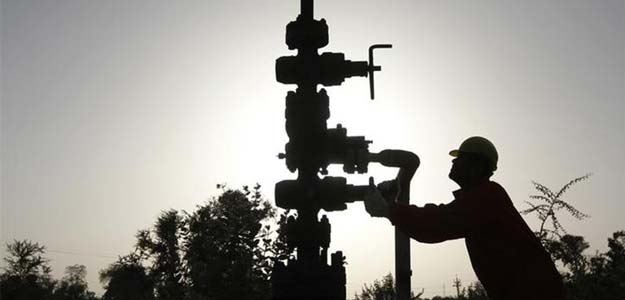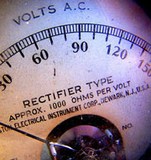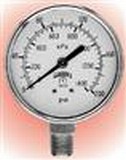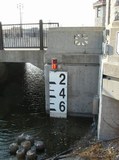The following is the text speech of the Prime Minister at the launch of PSLV-C23 on the morning of 30th June 2014
My congratulations to our brilliant space scientists, and the Department of Space; for yet another successful launch of the Polar Satellite Launch Vehicle! We have perfectly placed 5 satellites into their orbits 660 km above the Earth.
This fills every Indian’s heart with pride. And I can see it reflected in the joy and satisfaction on your faces.
Fascinated by Space Technology, I feel specially privileged to witness this event in person.
India’s advanced Space Program, puts her in an elite global group of 5-6 countries today. This is one domain, in which we are at the international cutting edge. A domain in which we have pushed beyond mediocrity to achieve excellence.
We have launched satellites of advanced nations. PSLV itself has launched 67 satellites; of which 40 have been foreign satellites, coming from 19 countries. Even today’s satellites, are all from developed nations – France, Canada, Germany and Singapore. Truly, this is a global endorsement of India’s space capabilities.
Inspired by Atal ji’s vision, we have sent a mission to the Moon. Another is on its way to Mars as we speak. I personally follow it with great interest. We have also developed our own satellite-based navigation system. I am told this will be fully deployed by 2015.
Moreover, we can be proud that our space program is Indigenous. We have developed it despite international hurdles.
Generations of our space scientists have worked to make India a self-reliant space power. We owe them a big thank you.
Our journey into Space has come a long way from its humble beginnings. It has been a journey of many constraints and resource limitations. I have seen photographs of rocket cones being transported on bicycles. Our first satellite, Aryabhatta, was made in industrial sheds in Bangalore.
Even today, our program stands out as the most cost effective in the world. The story of our Mars Mission costing less than the Hollywood movie Gravity, had gone viral on social media recently. Our scientists have shown the world, a new paradigm of Frugal Engineering, and the power of Imagination. Friends, this success of ours has deep historical roots.
India has a rich heritage of science and technology, including in the field of space. An understanding of the cosmos, and its relationship to Life and Science; is deeply rooted in our ancient thought and knowledge. Our ancestors had conceived of ideas like ‘Shunya’ and ‘flying objects’, long before others. The works of visionaries like Bhaskaracharya and Aryabhata, continue to inspire scientists.
Many misunderstand space technology to be for the elite. That it has nothing to do with the common man. I however believe, such technology is fundamentally connected with the common man. As a change agent, it can empower and connect, to transform his life. Technology opens up new opportunities of development. And gives us new ways of addressing our challenges.
Space may seem distant, but is an integral part of our daily life today. It drives our modern communication, connecting even the remotest family to the mainstream. It empowers the child in the farthest village with quality education, through Long-distance Learning. It ensures quality healthcare to the most distant person, through Tele-medicine. It enables the youth in a small town, with various new job opportunities. Satellite technology has made distance irrelevant. It effectively enables us to reach the unreached. It helps us connect virtually, where physical connections are difficult.
It has a critical role, in realizing the vision of a Digital India – the power of 125 crore connected Indians.
GIS technology has transformed policy planning, and implementation. Space imaging enables modern management, and conservation of water resources – through GIS-driven watershed development. It has been deployed in our urban planning, to scientifically manage our growing towns and cities. It has also become an important tool, in better managing, and conserving our natural resources. Whether it be the Himalayan glaciers, oceans and forests, coastal resources or our mineral wealth. Space imagery is improving our land management systems, bringing wasteland into productive use. Our next frontier, should be to extend the same to land records, bringing in accuracy and transparency for the common man.
Space technology has also evolved into an invaluable asset in disaster management. Satellite communication channels, often end up being the only mode of communication. Accurate advanced warning, and tracking of Cyclone Phailin, saved countless lives recently.
We must as a nation, fully harness this expertise in space technology, in our developmental process. For social change, economic development, and resource conservation. The possibilities are limitless. The benefits enormous. I urge the Department of Space, to proactively engage with all stakeholders, to maximize the use of space science in Governance and Development. Deepening of State involvement will be critical for the same.
Friends, India is rooted in our age-old ethos of Vasudeiva Kutumbakam. Of the whole world being one family. India’s Space program, is thus driven by a vision of service to humanity. Not by a desire of power. For us, it is an important instrument of our human progress.
We must therefore, share the fruits of our technological advancement, with those who do not enjoy the same. The developing world, and our neighbours in particular. We already share Disaster Management data with over 30 countries. We provide benefits of Tele medicine to Afghanistan and African countries. But we must do more!
Today, I ask our Space community, to take up the challenge, of developing a SAARC Satellite – that we can dedicated to our neighbourhood, as a gift from India. A satellite, that provides a full range of applications and services, to all our neighbours. I also ask you, to enlarge the footprint of our satellite-based navigation system, to cover all of South Asia.
Friends, continued progress in space must remain a national mission. We must keep enhancing our space capabilities. We must develop more advanced satellites; with higher computing, imaging and transmitting power. We must expand our satellite footprint, in terms of frequency and quality. We must also strengthen our international partnerships in all areas of Space technology.
India has the potential, to be the launch service provider of the world. We must work towards this goal. Construct the required new launch infrastructure. And extend our launching capabilities to heavier satellites.
Development of human resources, will be critical for our future success. I was very pleased to meet our young scientists here. I admire their work and their achievements. Let us link up with more universities and colleges, to develop our future leaders in this area. We must also involve our youth at large, with Space.
You have already started putting a lot of space-related data online, through your Bhuvan space portal. What steps can we take to further increase access to data, by students and researchers? Let us use Social Media to further engage with our youth. Let us invite school and college children, to witness launches and visit Space centres. Could we also think of developing, a state-of-the-art, interactive, digital Space Museum?
In conclusion, I want to emphasize how Technology is central to Development. It touches one and all, and is an important instrument of our national progress.
India’s Space program is a perfect example of my vision of Scale, Speed and Skill. Our Space scientists have made us global leaders, in one of the most complex areas of modern technology. This shows that we can be the best. If we apply ourselves, we can meet the aspirations of our people.
Let us take inspiration from today’s mission. Dedicate ourselves to accelerate our nation’s progress. I am confident We Can!
I thank the Department of Space, for this opportunity to witness the launch. I commend Dr. K. Radhakrishnan for his leadership. I wish the team the very best, as you prepare to put our spacecraft into the Mars Orbit, in a few months from now. I wish you every success, as you strive to master new technologies, and conquer new frontiers of Space. May all your endeavours meet with success!
Thank you!


 Every year, India adds more people than any other nation in the world, and in fact the individual population of some of its states is equal to the total population of many countries. For example, Population of Uttar Pradesh (state in India) almost equals to the population of Brazil. It, as per 2001 Population Census of India, has 190 million people and the growth rate is 16.16%. The population of the second most populous state Maharashtra, which has a growth rate of 9.42%, is equal to that of Mexico's population. Bihar, with 8.07%, is the third most populous state in India and its population is more than Germany's. West Bengal with 7.79% growth rate, Andhra Pradesh (7.41%) and Tamil Nadu (6.07%) are at fourth, fifth and sixth positions respectively. The sex ratio of India stands at 940. Kerala with 1058 females per 1000 males is the state with the highest female sex ratio. Pondicherry (1001) is second, while Chhatisgarh (990) and Tamil Nadu (986) are at third and fourth places respectively. Haryana with 861 has the lowest female sex ratio.
Every year, India adds more people than any other nation in the world, and in fact the individual population of some of its states is equal to the total population of many countries. For example, Population of Uttar Pradesh (state in India) almost equals to the population of Brazil. It, as per 2001 Population Census of India, has 190 million people and the growth rate is 16.16%. The population of the second most populous state Maharashtra, which has a growth rate of 9.42%, is equal to that of Mexico's population. Bihar, with 8.07%, is the third most populous state in India and its population is more than Germany's. West Bengal with 7.79% growth rate, Andhra Pradesh (7.41%) and Tamil Nadu (6.07%) are at fourth, fifth and sixth positions respectively. The sex ratio of India stands at 940. Kerala with 1058 females per 1000 males is the state with the highest female sex ratio. Pondicherry (1001) is second, while Chhatisgarh (990) and Tamil Nadu (986) are at third and fourth places respectively. Haryana with 861 has the lowest female sex ratio.




 Do employees know the quality policy?
Do employees know the quality policy?  Do employees know when changes are made to the process?
Do employees know when changes are made to the process? Can employee describe how to select next work item?
Can employee describe how to select next work item? Do employees know what to do with non conforming parts?
Do employees know what to do with non conforming parts? Are employees involved in continuous improvement teams?
Are employees involved in continuous improvement teams? Tell me about the quality policy.
Tell me about the quality policy. Show me how you record the inspection.
Show me how you record the inspection.




 June 30, 2014 Author: admin
June 30, 2014 Author: admin 




 Humans consume crop and animal products for nourishment while crops get most of their nutrient requirements from the soil. However, many soils do not provide all the nutrients in quantities needed by the crops. Soil nutrients removed by continuous cropping must be replaced through the addition of nutrient sources, such as fertilizers.
Humans consume crop and animal products for nourishment while crops get most of their nutrient requirements from the soil. However, many soils do not provide all the nutrients in quantities needed by the crops. Soil nutrients removed by continuous cropping must be replaced through the addition of nutrient sources, such as fertilizers. Nitrogen is the most consumed nutrient, due to its important role in crop production (N is an important component of many structural, genetic and metabolic compounds in plant cells). World demand for high-analysis, easy to transport fertilizer products is steadily increasing. Urea (46-0-0) is currently the most popular N fertilizer source with about 56 percent of the world market and represents the major sectoral growth in the nitrogen industry. The growth in demand has stimulated a growth in production.
Nitrogen is the most consumed nutrient, due to its important role in crop production (N is an important component of many structural, genetic and metabolic compounds in plant cells). World demand for high-analysis, easy to transport fertilizer products is steadily increasing. Urea (46-0-0) is currently the most popular N fertilizer source with about 56 percent of the world market and represents the major sectoral growth in the nitrogen industry. The growth in demand has stimulated a growth in production. The trend in phosphate consumption by product shows that the single superphosphate (SSP) share in the P market has dropped over the years. This is due to the continuous increase in the use of high-analysis P fertilizers, such as ammonium phosphates, mainly diammonium phosphate (DAP), the share of which increased to more than 50 percent of the global P market. DAP is the most consumed P fertilizer worldwide, due to its high P and N concentration.
The trend in phosphate consumption by product shows that the single superphosphate (SSP) share in the P market has dropped over the years. This is due to the continuous increase in the use of high-analysis P fertilizers, such as ammonium phosphates, mainly diammonium phosphate (DAP), the share of which increased to more than 50 percent of the global P market. DAP is the most consumed P fertilizer worldwide, due to its high P and N concentration. Potassium chloride or muriate of potash (MOP) is the most used K fertilizer product worldwide, accounting for almost 70 percent of all demand for K fertilizers. In some countries, such as the United States, Brazil or India, it accounts for more than 90 percent of all K fertilizer sold.
Potassium chloride or muriate of potash (MOP) is the most used K fertilizer product worldwide, accounting for almost 70 percent of all demand for K fertilizers. In some countries, such as the United States, Brazil or India, it accounts for more than 90 percent of all K fertilizer sold.